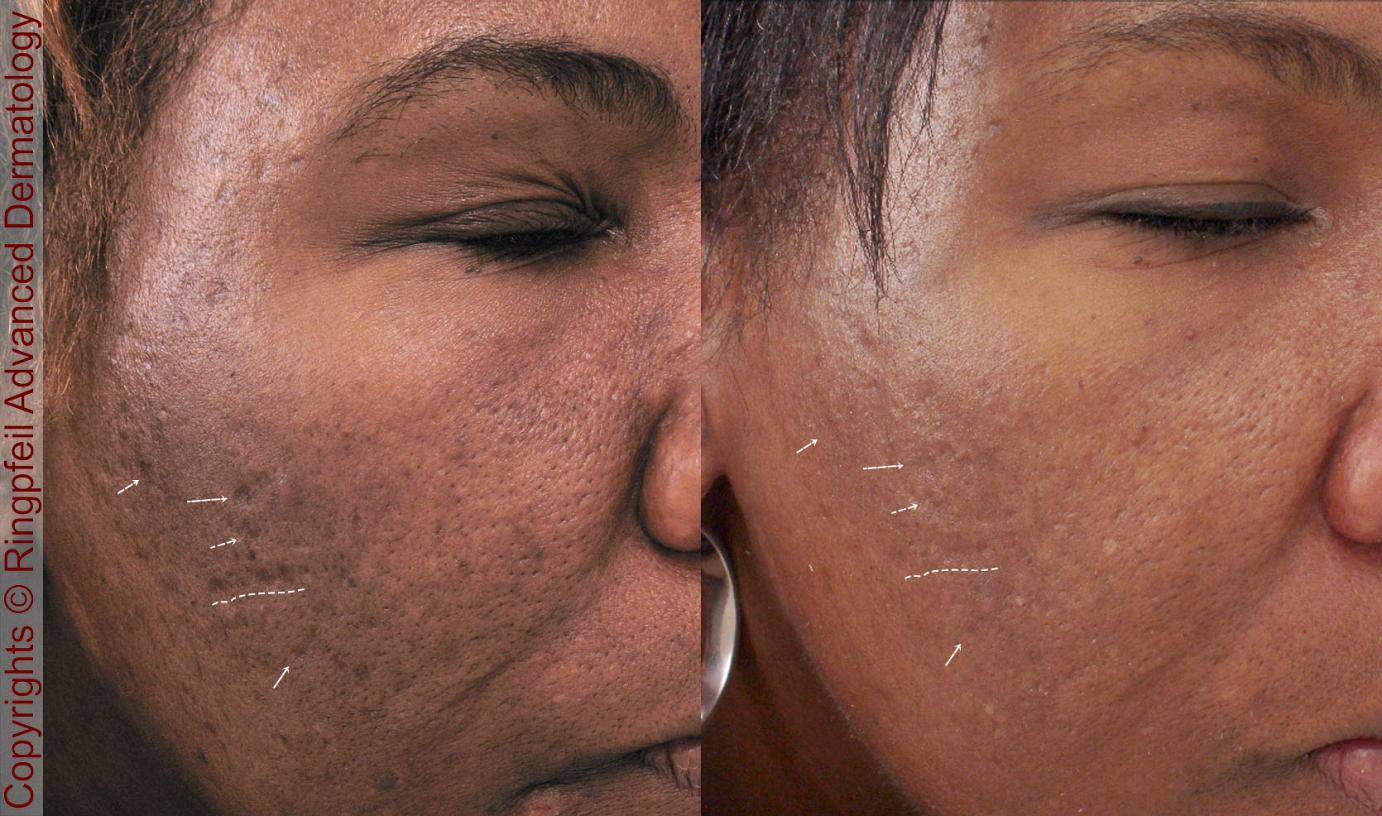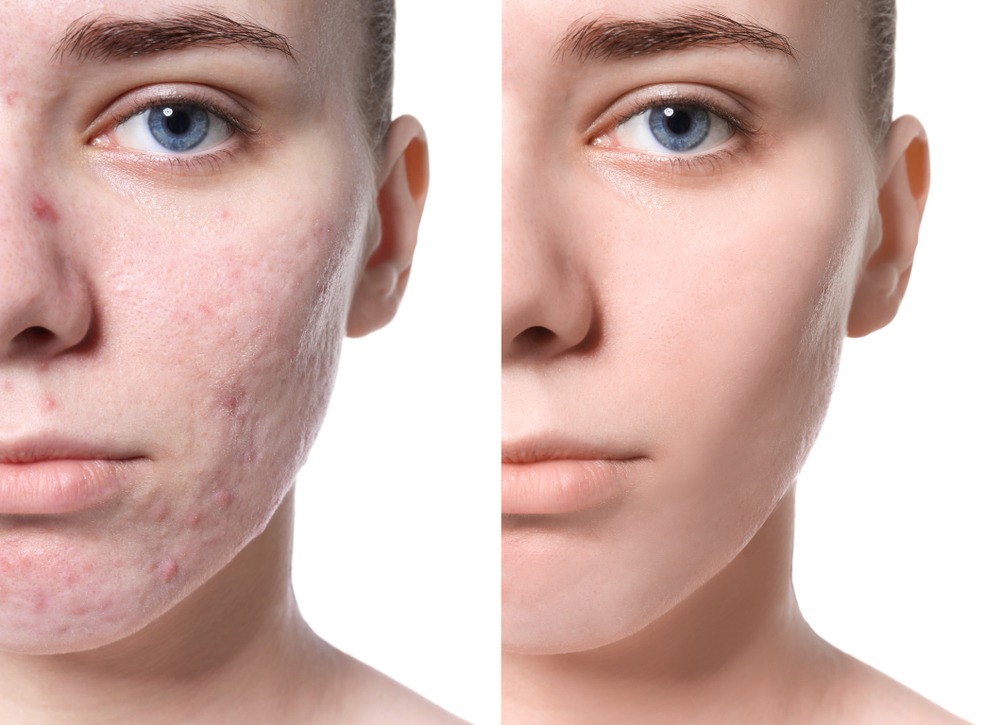A Comprehensive Guide to Handling Skin Conditions: Focusing on the Treatment of Acne Marks
Acne marks represent a considerable worry for several individuals, typically influencing self-worth and total skin wellness. Comprehending the numerous types of acne marks, such as atrophic and hypertrophic, is important for effective management and therapy.
Recognizing Acne Marks
Comprehending acne scars involves identifying the complicated interplay between skin recovery and the inflammatory procedures that happen during acne outbreaks. Acne develops when hair roots come to be blocked with oil, dead skin cells, and germs, causing inflammation. This inflammatory reaction is crucial for fighting infection but can additionally cause damage to the skin's tissue.
When the body tries to heal itself, it produces collagen, a protein crucial for skin framework. The quantity and quality of this collagen can differ, leading to different types of scars. Variables influencing scar development consist of the intensity of the acne, private skin kind, genetics, and the body's healing feedback.
Prompt administration of breakouts decreases swelling and tissue damages, which are important elements in scar growth. Eventually, recognizing the underlying devices of acne and its healing process is essential for efficient monitoring and avoidance of acne marks.
Kinds Of Acne Scars
The intricacy of acne scars can be classified into several unique kinds, each mirroring the underlying skin damage and recovery response. The most common kinds include atrophic scars, hypertrophic marks, and keloids.
These marks can even more be identified right into icepick, boxcar, and rolling scars, each varying in form and deepness. Icepick marks are narrow and deep, appearing like tiny punctures, while boxcar scars have a bigger, more angular appearance.
Hypertrophic marks, on the various other hand, are raised and result from an overflow of collagen during healing. These marks might differ in size and can in some cases discolor with time but may stay noticeable.
Keloids are a more serious kind of hypertrophic scarring, extending beyond the initial injury website and typically calling for much more aggressive therapy options. Recognizing these kinds is important for determining one of the most effective therapy strategy tailored to a person's specific mark type and skin condition.
Topical Treatments

Topical treatments play a crucial function in taking care of acne marks, offering patients a series of options targeted at boosting skin appearance and look. These treatments mostly concentrate on promoting skin regrowth, minimizing pigmentation, and enhancing total complexion.
Among the most extensively made use of topical representatives is retinoids, which are derivatives of vitamin A. Retinoids stimulate collagen manufacturing and increase cell turn over, aiding to reduce the appearance of marks with time. Additionally, alpha hydroxy acids (AHAs) and beta hydroxy acids (BHAs) can exfoliate the skin, removing dead skin cells and advertising a smoother surface.
Another efficient group includes topical antioxidants, such as vitamin C, which can assist to lighten hyperpigmentation associated with acne marks while offering anti-inflammatory benefits. Silicone gels and sheets have actually been revealed to hydrate and squash scars, making them less recognizable.
Hydroquinone is commonly used for its skin-lightening residential or commercial properties, although it must be used meticulously due to prospective adverse effects. Including moisturizers that include active ingredients like hyaluronic acid can try this out further support skin recovery and boost texture. For ideal outcomes, it is suggested to speak with a skin doctor for personalized treatment referrals.

Expert Therapy Alternatives
When it involves addressing much more severe acne marks, patients often turn to expert therapy alternatives that can provide a lot more remarkable outcomes than topical treatments alone. These interventions are normally administered by skin specialists or licensed professionals and consist of various techniques tailored to specific skin types and scar extent.
Among one of the most common treatments is chemical peels, which make use of acids to promote and scrub the skin regrowth. This method can dramatically minimize the appearance of superficial marks. Microneedling, one more efficient option, entails developing micro-injuries in the skin to promote collagen production, enhancing appearance and lessening scars.
Laser treatment is additionally extensively used, with fractional lasers particularly targeting scarred regions while preserving surrounding skin. This technique can produce exceptional enhancements in skin appearance over a number of sessions. Additionally, facial fillers are used to recover volume and ravel unequal skin surface areas, offering prompt, albeit short-lived, results.
Way Of Living and Natural Home Remedy
Incorporating way of living changes and home solutions can play a considerable role in managing acne marks, complementing professional treatments. Keeping a balanced diet rich in minerals, vitamins, and antioxidants can facilitate skin recovery - acne and acne scars treatment. Foods high in vitamin C, such as citrus fruits, and those having zinc, like nuts and seeds, promote skin regrowth and help decrease swelling
Hydration is additionally essential; alcohol consumption ample water keeps the skin hydrated, aiding in its natural repair service procedures. Normal exercise improves blood circulation, which can improve nutrient shipment to the skin and boost total skin.
Along with dietary changes, incorporating topical home treatments can be helpful. All-natural active ingredients such as aloe tea, vera, why not find out more and honey tree oil have anti-inflammatory and anti-bacterial homes, which may assist in minimizing the look of scars. Exfoliating the skin with gentle scrubs can also promote cell turnover, aiding in the fading of marks over time.
Moreover, developing a regular skin care regimen that includes sun protection is vital, as UV direct exposure can dim scars. By integrating these way of life modifications and natural remedy, individuals can boost their skin's recovery process and achieve a much more even skin tone.
Verdict
Reliable blog here monitoring of acne marks demands a detailed understanding of their types and the underlying mechanisms included in scar formation. A combination of topical therapies, specialist therapies, and lifestyle modifications can significantly enhance skin healing and minimize mark presence. Highlighting the value of collagen manufacturing, a balanced diet plan, and a constant skincare regular adds to improved skin wellness. Inevitably, a complex technique makes sure optimum end results in the therapy of acne marks, promoting renewed confidence in individuals affected by this problem.
Comprehending acne marks involves acknowledging the complex interplay in between skin healing and the inflammatory processes that take place during acne break outs. Aspects affecting mark development include the extent of the acne, specific skin kind, genes, and the body's healing feedback.
These scars can further be categorized right into icepick, boxcar, and rolling marks, each varying in form and deepness. Icepick marks are deep and narrow, looking like small leaks, while boxcar marks have a bigger, much more angular appearance (skin rejuvenation treatments).Effective management of acne scars requires a detailed understanding of their kinds and the hidden devices entailed in scar formation